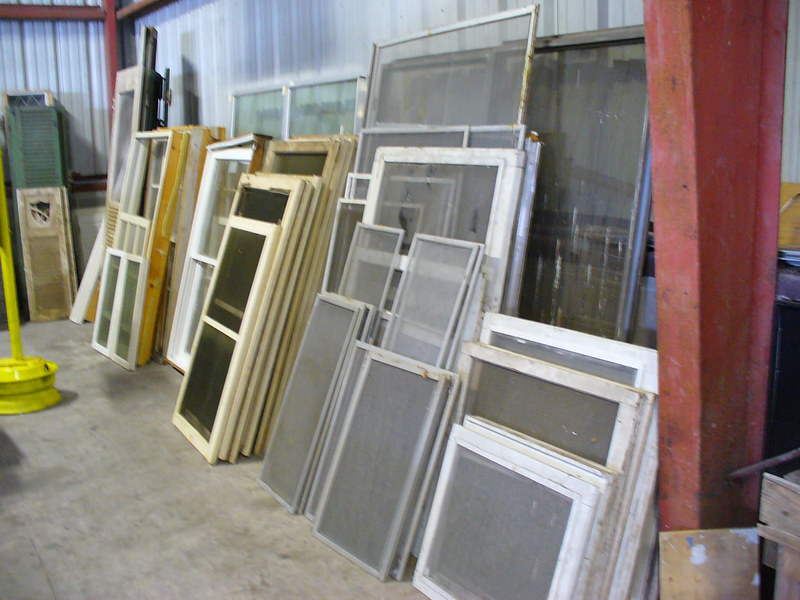Window screens
Contents |
[edit] Introduction
Window screens (sometimes referred to as fly screens) are exterior window coverings that are removable. They are primarily made from materials such as aluminium and fibreglass.
Their purpose is to keep out insects when windows are open, but they can also help provide protection from small stones and objects that might break window glass.
Window screens were first introduced in the United States in the 1800s. They gained popularity in North America and Australia in the 1950s and variations are now frequently used on structures such as porches and conservatories (or sunrooms).
[edit] Applications
Window screens are used in domestic applications in areas where seasonal insects (such as flies, midges, mosquitoes and wasps) can be a nuisance. Window screens can also help keep pets inside while preventing unwanted intrusions from birds and small animals. In addition, there are extremely fine screen options that can help cut the amount of pollen entering through open windows.
They also provide some glare reduction inside while creating a degree of privacy from the outside of the building.
[edit] Aesthetics
Like wired glass, window screens can be less visually attractive than plain windows, although it is possible to improve the overall look of the screens by selecting screening materials that are less visible.
Window screens partially obstruct interior views, although this can again be controlled through the selection process. For instance, some window screens can be quickly removed or rolled up and retracted to reduce their visibility.
Aesthetics can also be improved by decorating the screens. In some neighbourhoods, folk art is a common theme on window screens, either painted or printed directly onto the mesh.
Short Guide, Scottish traditional shopfronts, published, on 18 April 2017 by Historic Environment Scotland, defines window screens as: ‘Devices used to create a division between the window display and shop. Often made of timber or glass and found in Victorian, Edwardian and inter-war shops. Changes in fashion mean that these rarely survive.’
[edit] Related articles on Designing Building
[edit] Related articles on Designing Buildings
Featured articles and news
RTPI leader to become new CIOB Chief Executive Officer
Dr Victoria Hills MRTPI, FICE to take over after Caroline Gumble’s departure.
Social and affordable housing, a long term plan for delivery
The “Delivering a Decade of Renewal for Social and Affordable Housing” strategy sets out future path.
A change to adoptive architecture
Effects of global weather warming on architectural detailing, material choice and human interaction.
The proposed publicly owned and backed subsidiary of Homes England, to facilitate new homes.
How big is the problem and what can we do to mitigate the effects?
Overheating guidance and tools for building designers
A number of cool guides to help with the heat.
The UK's Modern Industrial Strategy: A 10 year plan
Previous consultation criticism, current key elements and general support with some persisting reservations.
Building Safety Regulator reforms
New roles, new staff and a new fast track service pave the way for a single construction regulator.
Architectural Technologist CPDs and Communications
CIAT CPD… and how you can do it!
Cooling centres and cool spaces
Managing extreme heat in cities by directing the public to places for heat stress relief and water sources.
Winter gardens: A brief history and warm variations
Extending the season with glass in different forms and terms.
Restoring Great Yarmouth's Winter Gardens
Transforming one of the least sustainable constructions imaginable.
Construction Skills Mission Board launch sector drive
Newly formed government and industry collaboration set strategy for recruiting an additional 100,000 construction workers a year.
New Architects Code comes into effect in September 2025
ARB Architects Code of Conduct and Practice available with ongoing consultation regarding guidance.
Welsh Skills Body (Medr) launches ambitious plan
The new skills body brings together funding and regulation of tertiary education and research for the devolved nation.
Paul Gandy FCIOB announced as next CIOB President
Former Tilbury Douglas CEO takes helm.
UK Infrastructure: A 10 Year Strategy. In brief with reactions
With the National Infrastructure and Service Transformation Authority (NISTA).























